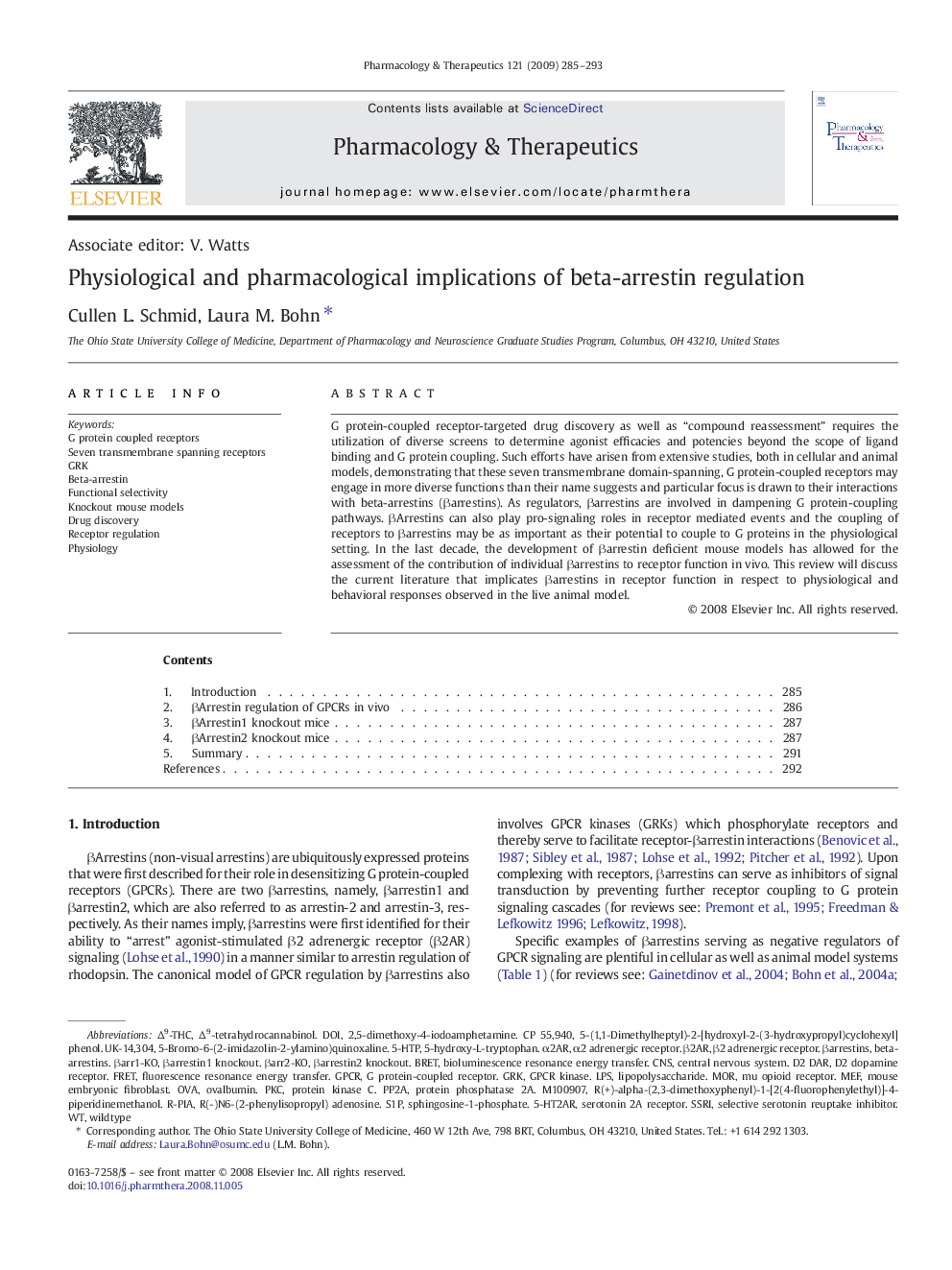| کد مقاله | کد نشریه | سال انتشار | مقاله انگلیسی | نسخه تمام متن |
|---|---|---|---|---|
| 2564185 | 1127619 | 2009 | 9 صفحه PDF | دانلود رایگان |

G protein-coupled receptor-targeted drug discovery as well as “compound reassessment” requires the utilization of diverse screens to determine agonist efficacies and potencies beyond the scope of ligand binding and G protein coupling. Such efforts have arisen from extensive studies, both in cellular and animal models, demonstrating that these seven transmembrane domain-spanning, G protein-coupled receptors may engage in more diverse functions than their name suggests and particular focus is drawn to their interactions with beta-arrestins (βarrestins). As regulators, βarrestins are involved in dampening G protein-coupling pathways. βArrestins can also play pro-signaling roles in receptor mediated events and the coupling of receptors to βarrestins may be as important as their potential to couple to G proteins in the physiological setting. In the last decade, the development of βarrestin deficient mouse models has allowed for the assessment of the contribution of individual βarrestins to receptor function in vivo. This review will discuss the current literature that implicates βarrestins in receptor function in respect to physiological and behavioral responses observed in the live animal model.
Journal: Pharmacology & Therapeutics - Volume 121, Issue 3, March 2009, Pages 285–293